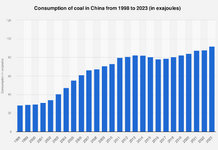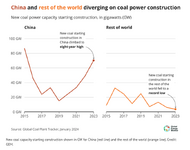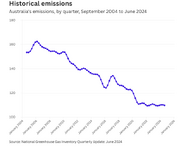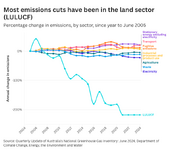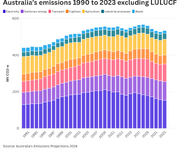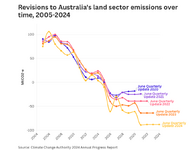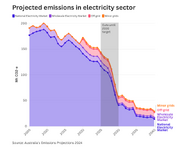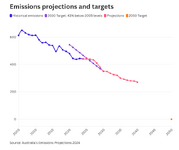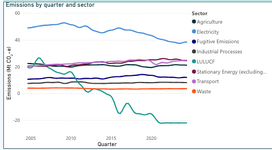GregLocock
Automotive
- Apr 10, 2001
- 23,736
An unusually honest assessment of Australia's plans, from 'their' ABC.

 www.abc.net.au
www.abc.net.au
Basically most of the improvement to date has been by booking ever larger amounts of land use changes. The 30% decrease in electricity emissions to date since 2009, ie 15 years, will have to be doubled in the next 5 years. That'll be interesting.
The six charts that reveal Australia's (slow) climate progress
Climate and Energy minister Chris Bowen declared "Australia is on track to deliver on our legislated targets" in his annual climate statement. But new data challenges that optimism.
Basically most of the improvement to date has been by booking ever larger amounts of land use changes. The 30% decrease in electricity emissions to date since 2009, ie 15 years, will have to be doubled in the next 5 years. That'll be interesting.


